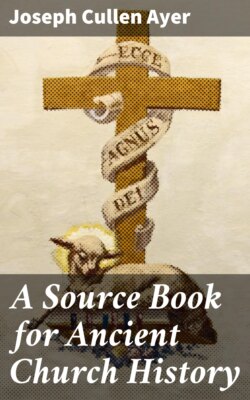Читать книгу A Source Book for Ancient Church History - Joseph Cullen Ayer - Страница 16
На сайте Литреса книга снята с продажи.
Period II. The Post-Apostolic Age: AD 100-A. D. 140
ОглавлениеTable of Contents
The post-apostolic age, extending from circa 100 to circa 140, is the age of the beginnings of Gentile Christianity on an extended scale. It is marked by the rapid spread of Christianity, so that immediately after its close the Church is found throughout the Roman world, and the Roman Government is forced to take notice of it and deal with it as a religion (§§ 6, 7); the decline of the Jewish element in the Church and extreme hostility of Judaism to the Church (§ 5); the continuance of chiliastic expectations (§ 10); the beginnings of the passion for martyrdom (§ 8); as well as the appearance of the forms of organization and worship which subsequently became greatly elaborated and remained permanently in the Church (§§ 12–15); as also the appearance of religious and moral ideas which became dominant in the ancient Church (§§ 11, 12, 16). The literature of the period upon which the study of the conditions and thought of the Church of this age must be based is represented principally by the so-called Apostolic Fathers, a name which is convenient, but misleading and to be regretted. These are Clement of Rome, Barnabas, Ignatius, Polycarp, Papias, Hermas; with the writings of these are commonly included two anonymous books known as the Didache, or Teaching of the Twelve Apostles, and the Epistle to Diognetus. From all of these selections are given.4
[pg 014]
